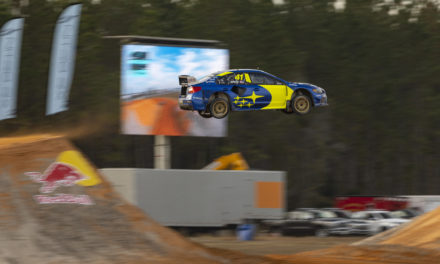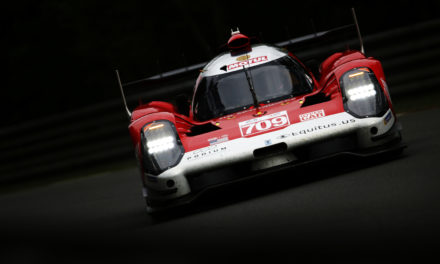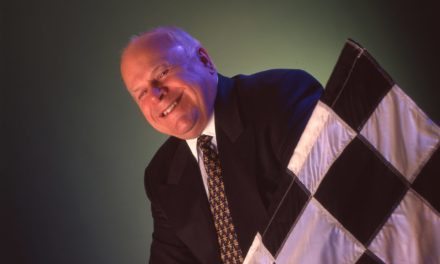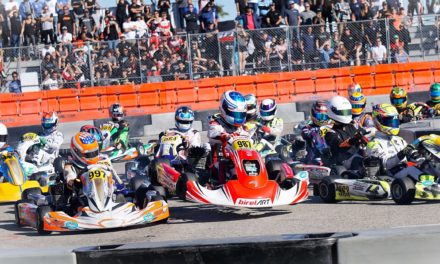Each December, Indianapolis hosts the three-day Performance Racing Industry trade show, the largest gathering of motorsports professionals in the world with 1100 exhibiting companies and 70,000 attendees from all 50 states and 70 countries.
As you’d suspect, the vast majority of the show is devoted to gasoline- and diesel-powered racers, as it has been for decades, and will be for years to come. But for the past two years, there’s been a showroom off to the side devoted to one of the newest types of racing: Electric.
“The PRI Show is about embracing new technologies and helping the industry stay ahead of trends,” said Jamie Meyer, PRI president. “Electric vehicles are an important emerging trend in the performance and racing industries.”
Front and center in the EV Performance Zone is the Faster Than Cancer dragster, owned and driven by Steve Huff, a Seattle area racer and car builder. His Faster Than Cancer rail dragster (Huff is a cancer survivor, and head of the fasterthancancer.org non-profit) is the first driver to top 200 mph in an electric dragster. At his quickest, he has made a quarter-mile pass of 202.85 mph in 7.55 seconds.

Steve Huff (C) with friends Scott Mercado and Sean Kinney, 2018. Photo: Steve Huff Motorsports
The racing times, they are a-changing, Huff says. “Most racing enthusiasts walk up to the car and ask, ‘How much horsepower?’ The younger generation asks, ‘How many kilowatts?’”
He wasn’t allowed to bring his battery-operated car to a National Hot Rod Association event in 2017, Huff says, now he is welcomed by them to make exhibition runs.
Huff built the dragster because he saw a TV interview with “Big Daddy” Don Garlits, the Florida-based racer who, at 90, attempted to break the 200 mph electric barrier in his own electric dragster, which was displayed at PRI next to Huff’s. He wasn’t able to quite do it, and said he wasn’t sure the technology was there for it to happen.
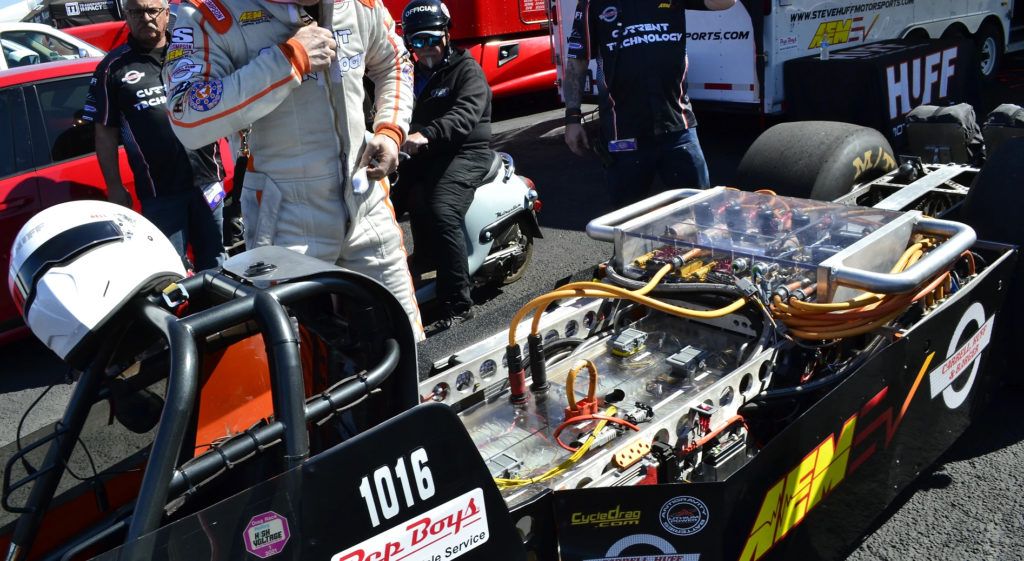
Photo: Steve Huff Motorsports
Huff thought the difference might be an AC (alternating current) motor instead of a DC (direct current) motor like Garlits was using, and Huff says that made a difference. The battery Huff uses is comparatively small and light, with 980 individual pouch-like cells. “The battery is 800 volts,” he says, “and we draw 2000 amps out of it.” The total horsepower is 2400, double what Garlits was able to get from his dragster, with 2000 pound-feet of torque.
As fast as Huff’s 2040-pound car is, of course he wants to go faster. He’ll be trying out a new clutch assembly and a 40-pound flywheel in the near future. The car, Huff says, has a final drive of two extra-heavy-duty motorcycle-like chains instead of a driveshaft.
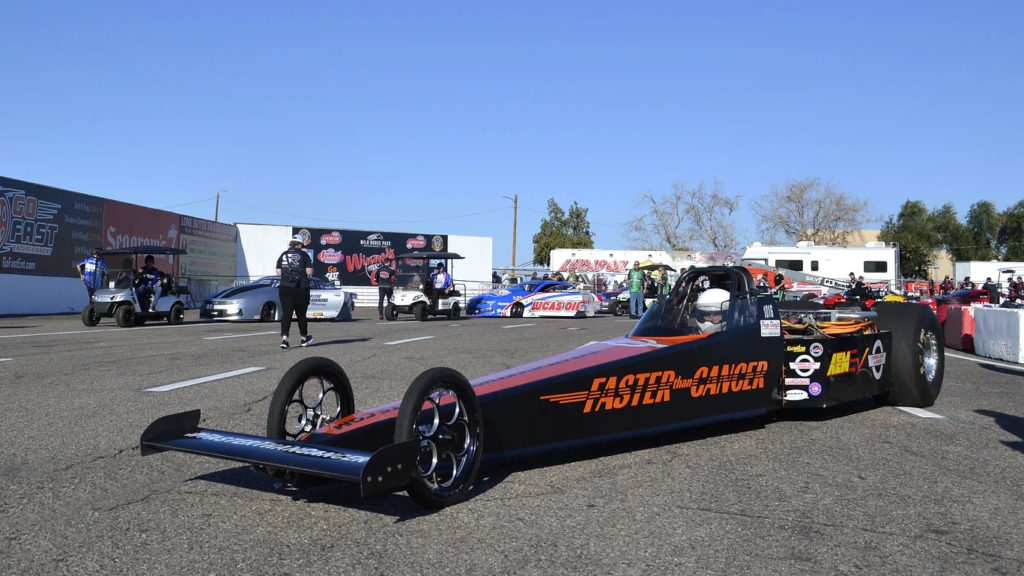
Photo: Steve Huff Motorsports
“Our biggest complaint from traditional fans is no noise,” Huff says. When he speeds down the drag strip, there’s a squeal of the rear tires, then a whirr. “There’s no green halo around my car, but we must be responsible for a sustainable future.
“I run the same brakes, same parachutes, the same seat belt, the same tires and wheels, the only thing that’s different is what makes the power.” Gasoline traditionalists “love everything about the car and what it does, until I say the word ‘electric.’ But when I tell them that this car costs me about 90 cents per pass, they get it.
“In motorsports, we all want to be challenged in finding the next big thing. When we were kids, and we were shown cartoon cars of the distant future, they were all buzzing around. They weren’t going bap-a-buh-bap-a-buh!”
The Jetsons would approve.
***
Here are a few other electric racers that shared space with Huff’s car in the PRI EV Performance Zone. Additional ones included karts, formula cars, sports cars and even an oval-track stock car:
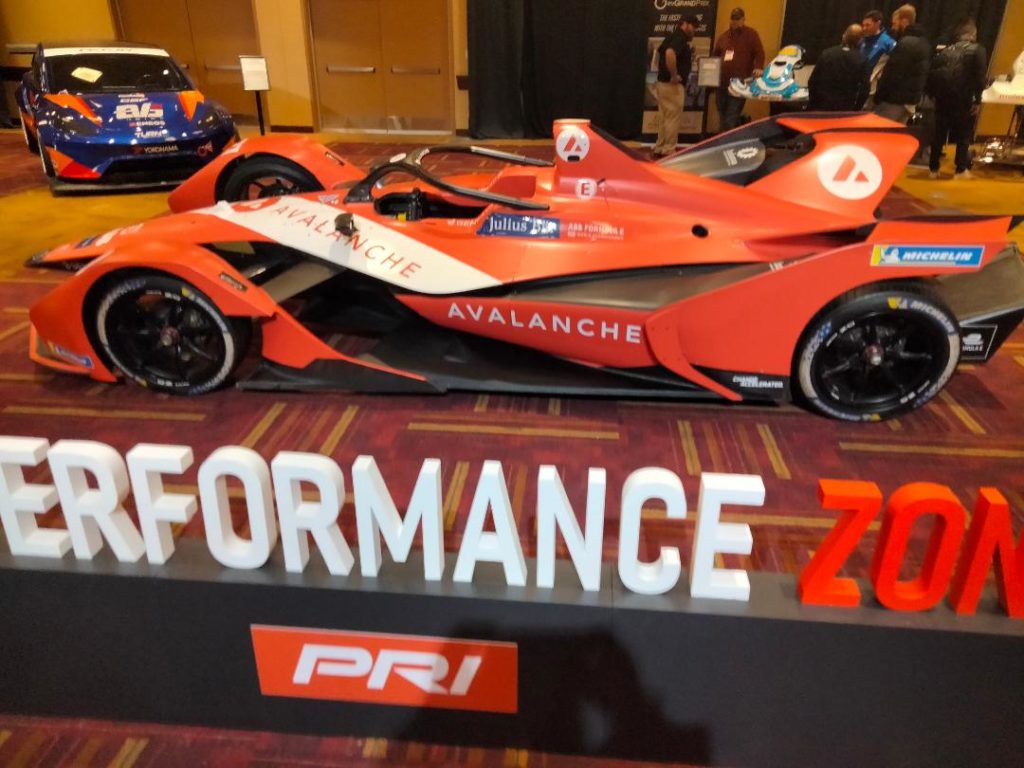
Formula E is the best-known electric series.
The best-known electric racing series is Formula E, similar to Formula 1, but with electric motors. The international series held its first race in 2014. No car is allowed on the track that isn’t electric, even emergency vehicles. The generation 3 series model, like this Avalanche Andretti, is wider than before. Avalanche Andretti—and, yes, it’s ˆ Andretti family—is expected to partner with Porsche in 2023.
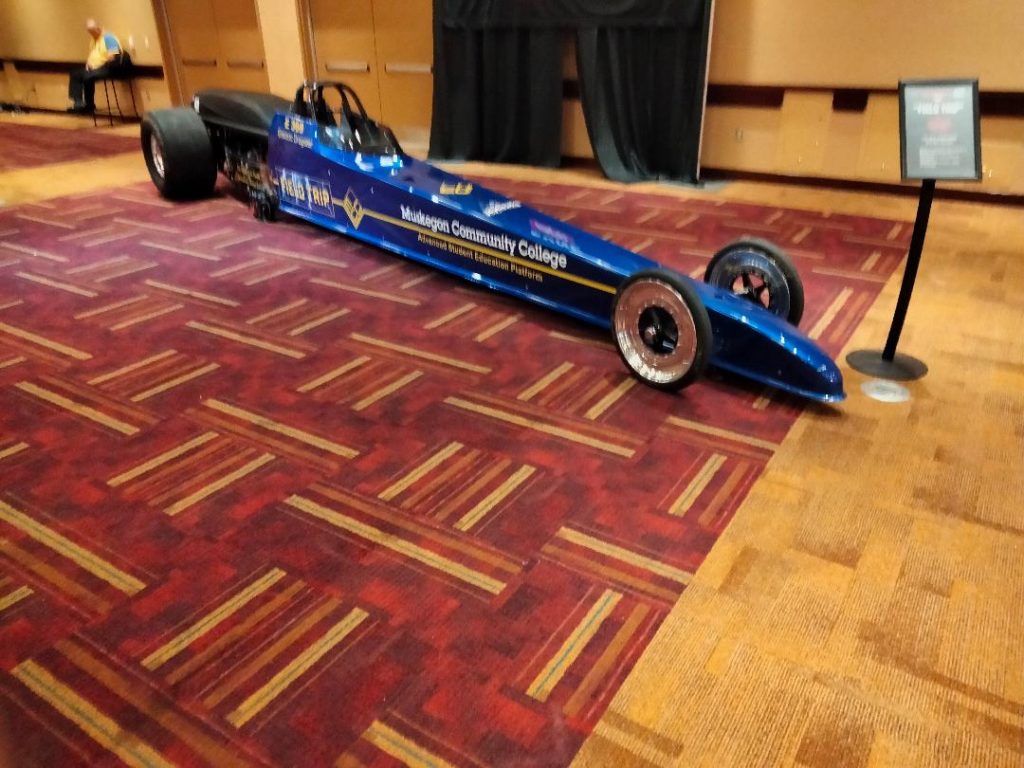
Muskegon Community College has been racing electric dragsters for more than a decade.
Racing is often used as a teaching element, and electric racing is no exception. Muskegon Community College in Michigan has been running electric dragsters for two decades, especially since 2011—when the car set a quarter-mile record of 48 mph. This one is a lot faster.
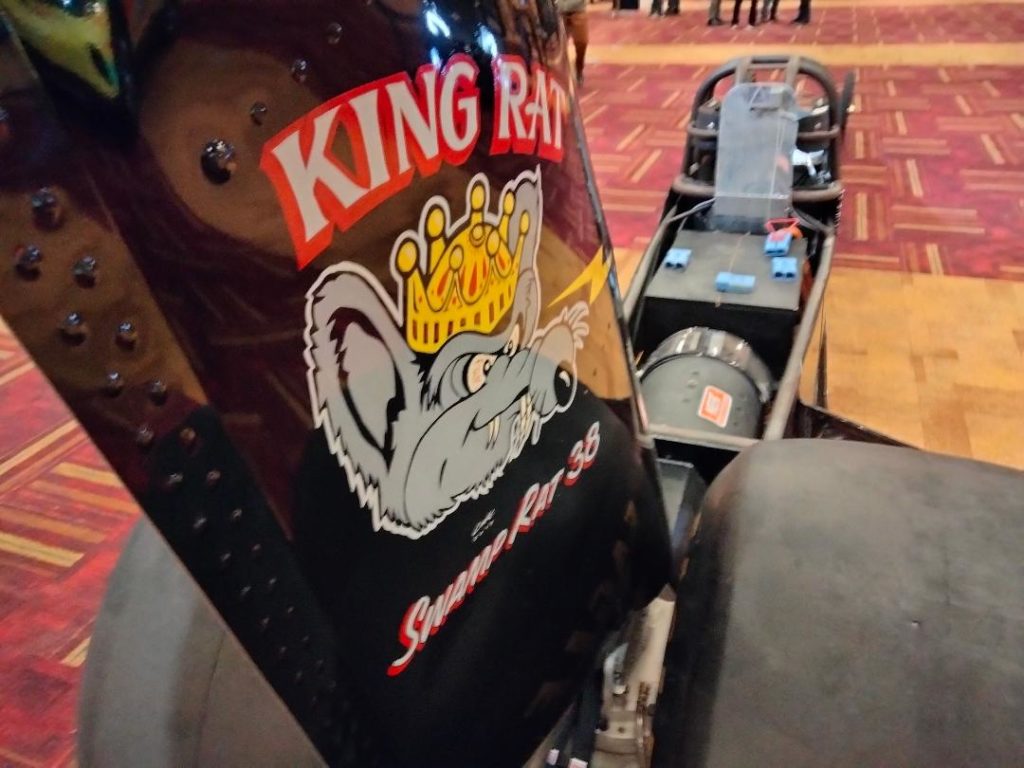
“Big Daddy” Don Garlits’ electric dragster.
This is a look forward from the rear wing of “Big Daddy” Don Garlits’ dragster, including his famous “Swamp Rat’ designation—he has numbered every new generation of dragsters he’s built since the 1950s. A member of most every racing hall of fame, Garlits is considered the most innovative dragster builder in history, and his interest in electric racing has swayed some fans to his way of thinking.
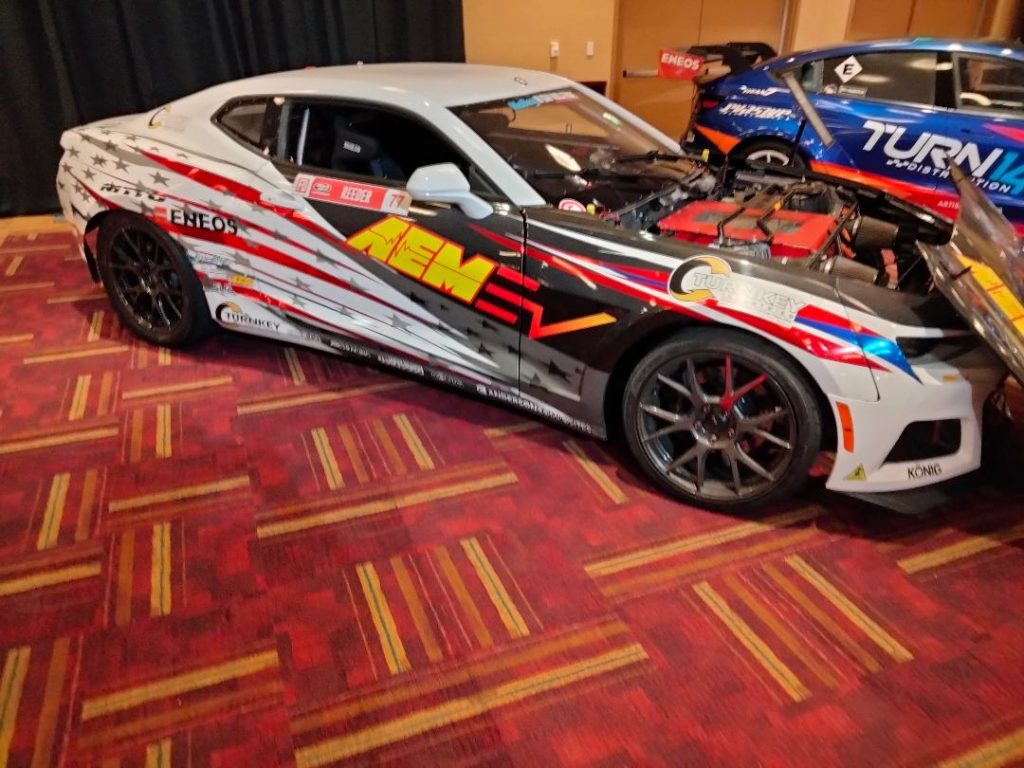
Camaro drift car has Tesla power.
Finally, this is the AER Chevrolet Camaro EL1 Pro Drift car, with 514 horsepower and a motor that spins up to 16,000 rpm. Power doesn’t come from a Chevrolet motor, but from a Tesla.


